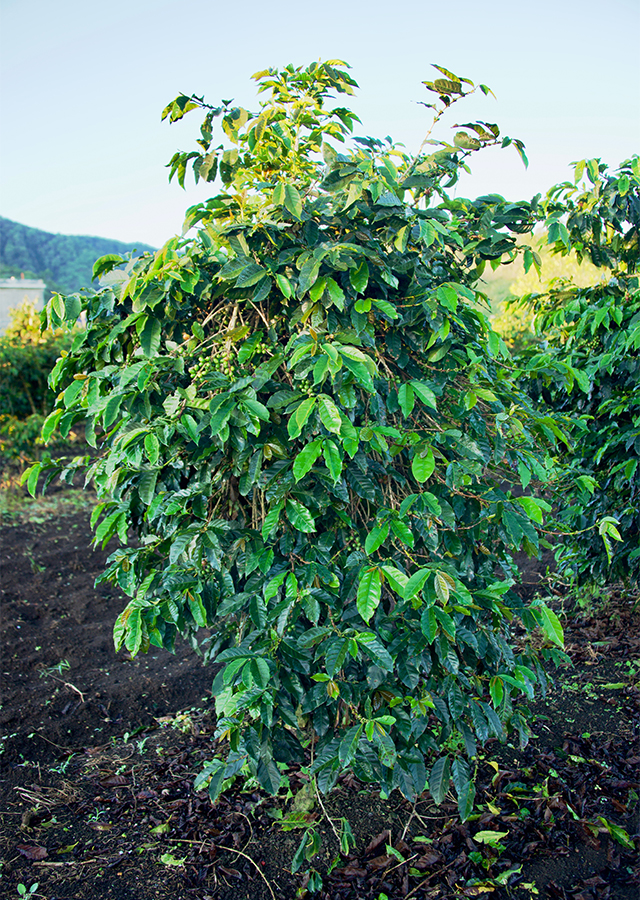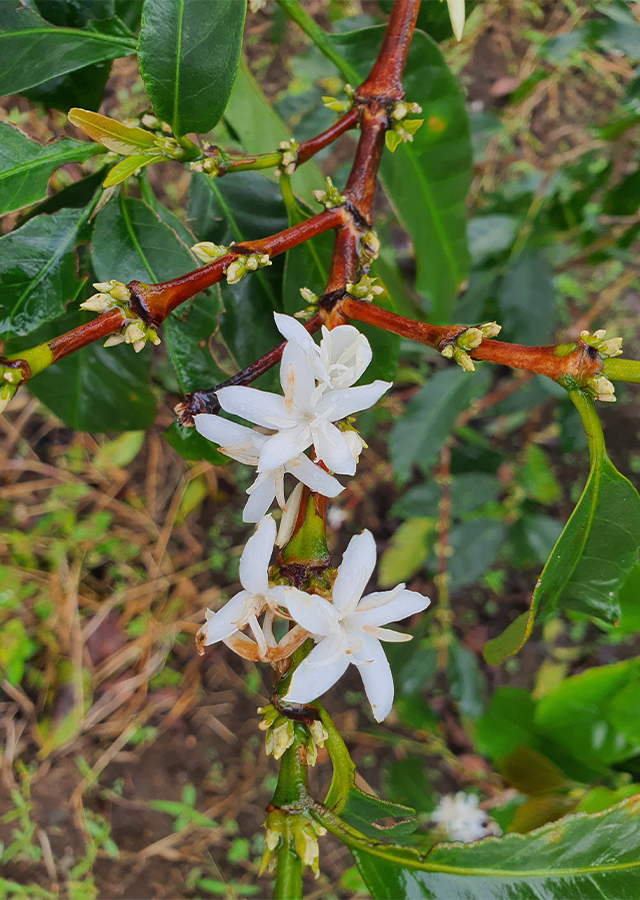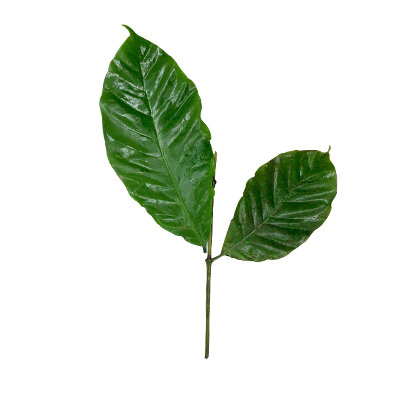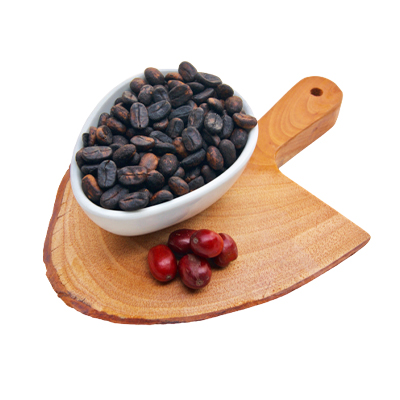Arabica Coffee
Coffea arabica L.
Rubiaceae
Location in our garden
Orchard



Synonym
Coffea bourbonica Pharm. ex Wehmer
Coffea corymbulosa Bertol.
Coffea laurifolia Salisb.
Habitus
Shrubs. An evergreen perennial shrub or small tree, grows up to 9 m tall.
Part Used
Leaves
Seeds
Fruit
Growing Requirements
Need Shade
Habitat
Mountains
Overview
- It is the most commonly grown Coffea species. Arabian coffee is native to northeast Tropical Africa (Southern Ethiopia, South Sudan (Boma Plateau), and probably East Tropical Africa (Kenya, Mt Marsabit). During the fourteenth century, coffee was first grown by the Arabs. It is the world's favorite beverage, the world's largest commercial crop vine, and the world's second most precious commodity after oil. For their relaxing properties, its seeds have long been admired.
Vernacular Names
- Kafae (Thai), Kahana (Tagalog), Caphi (India), Ka fei dou (Chinese), Kahwa (Arabian), Cafeier D'Arabie (French), Koohi noki (Japanese).
Agroecology
Coffee arabica prefers a calm, moderately humid atmosphere and is usually grown in the tropics and sub-tropics at altitudes of 1,300-1,500 m. In areas with mean annual temperatures of 15 - 25 °C and mean annual precipitation of 1,500-2,000 mm, it thrives best. The plant prefers a position in light shade, a deep friable soil on undulating land, unsuited to stiff clay or sandy soils, but is considered tolerant of acid soils, preferring a pH in the range of 5.5-7.0
Morphology
- Stems - evergreen, glabrous.
- Leaves - opposite, dark green, shiny, elliptic oblong to elliptic broad, acute apex, acute base, simple, margin slightly ondulating.
- Flowers - white fragrant, stellate in-out line, 1.0-1.5 cm across, axillary, calyx small, cupulate.
- Fruits - a berry ovoid, ellipsoid to oblong, 10- 18 mm long, green maturing to red, fleshy, usually containing 2 seeds.
- Seeds - the outer one is called the 'parchment' and the inner one is called 'the silver skin'. Ellipsoidal, 8-12.5 mm long, flattened on one side with a medial straight or s-shaped groove and enclosed in 2 membranes.
Cultivation
- Propagated by seeds and cuttings.
- The best branches can measure 3/16 to 5/16 in diameter and contain two or three leaves for the cutting method.
Chemical Constituents
- Alkaloid, mallic acid, mannite, gallic acid, polyphenol (caffeine, chlorogenic acid, tannin, ferulic acid), flavonoid, terpenoid, saponin, coumarins, quinones.
- The seed contains caffeine, theobromine and theophylline.
Traditional Medicinal Uses
- Coffee is an effective and much-loved central nervous system stimulant, promoting mental alertness and perception.
- Coffee extracts improve heart performance and physical performance, stimulate digestive juices, and serve as an effective diuretic.
- It can be used to treat drowsiness and to prevent headaches and migraines. It is non-addictive, while headaches can be caused by over intake or sudden withdrawal from coffee.
- To encourage weight loss, decaffeinated green coffee bean extract is used.
- A dramatically decreased risk of colon cancer is associated with daily coffee drinking.
- Coffee can again have a protective effect against the diseases of Alzheimer's and Parkinson's.
- The green bean of coffee will be known as a herb that controls liver qi in the Chinese medical dietary system, which is its therapeutic route to intense energy enhancement (chemically due to the action of caffeine on the nervous system).
- It maintains its fundamental medicinal properties when the bean is roasted, but turns from a cooling herb to a warming herb.
Part Used
Reference Sources
- Chevallier, A,. 2016. Encyclopedia of Herbal Medicine: 550 Herbs and Remedies for Common Ailments 3rd edition. DK.
- Kew Science. Plants of The World Online: Coffea arabica L. http://powo.science.kew.org/taxon/urn:lsid:ipni.org:names:747038-1 (Accessed 02-11-2020).
- Lim,T.K,. 2013. Edible Medicinal And Non-Medicinal Plants Vol. 5 page 614
- Fern, Ken. 2019. Useful Tropical Plants. Coffea arabica. http://tropical.theferns.info/viewtropical.php?id=Coffea+arabica. (Accessed 2-12-2020).
- Institut for Traditional medicine. 2003. Coffee in China. http://www.itmonline.org/arts/coffee.htm. (Accessed 2-12-2020)


